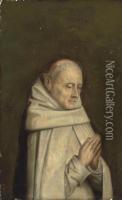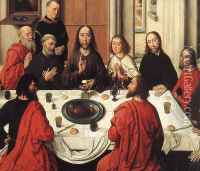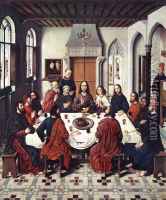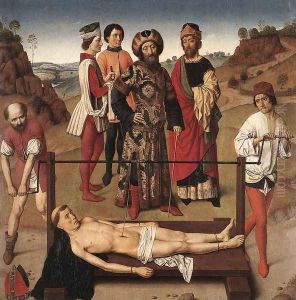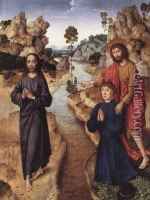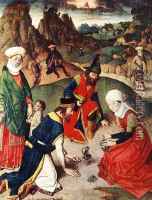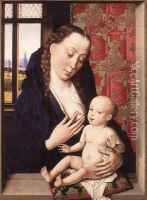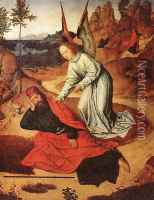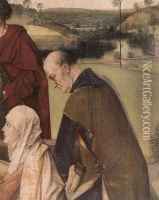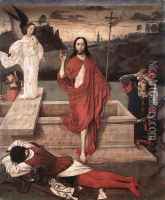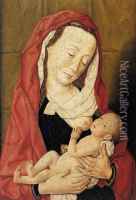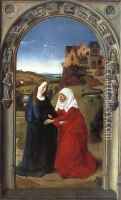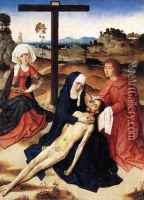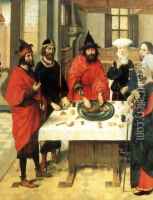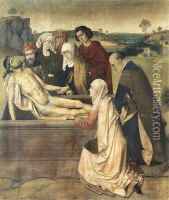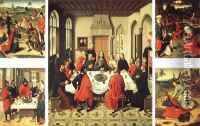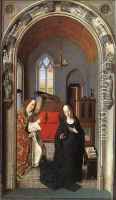Dieric the Elder Bouts Paintings
Dieric Bouts, also known as Dieric the Elder, was a prominent Early Netherlandish painter who is known for his contribution to Northern Renaissance art. Born around 1415, likely in Haarlem, Bouts later moved to Louvain (modern-day Leuven, Belgium) where he lived and worked for the majority of his career. His works are characterized by a refined use of color and detail, as well as a serene and contemplative approach to religious subjects.
Bouts became active as a master in Leuven in the 1440s and quickly established himself as a leading painter in the city. He was influenced by the works of Jan van Eyck and Rogier van der Weyden, and he further developed the use of naturalistic detail and complex iconography. Bouts was one of the first northern painters to demonstrate the use of a single vanishing point in his compositions, a technique that contributed to the development of perspective in Northern European painting.
One of his most famous works is the 'Altarpiece of the Holy Sacrament' (1464-1468), commissioned by the Confraternity of the Holy Sacrament in Leuven, which is noted for its sophisticated handling of both perspective and light. 'The Last Supper' panel from this altarpiece is particularly renowned. Bouts also painted 'The Entombment', which is considered one of his masterpieces and displays his skill in portraying emotion and solemnity.
Bouts's sons, Dieric Bouts the Younger and Aelbrecht Bouts, were also painters, and they continued their father's workshop after his death. Dieric the Elder Bouts died in Leuven in 1475, leaving behind a legacy that would influence Flemish art for decades. His work is held in high regard for its devotional quality and its contribution to the development of Northern Renaissance art.

